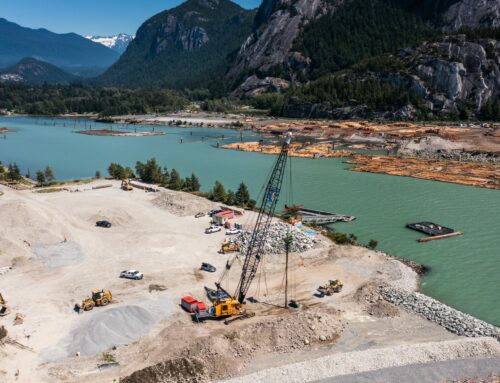
In the Beginning: The Ancient Foundations of Geotechnical Engineering
MENARD CANADA GEOTECHNICAL SERIES
Early civilizations such as the Mesopotamians, Egyptians, and Chinese utilized basic geotechnical principles in constructing foundations in different soil types for buildings, irrigation systems, defensive structures and more. This led to many of the innovative techniques for overcoming soil-related challenges we see today.
The Birth of Geotechnical Engineering
Despite not having “modern” technology, ancient civilizations demonstrated remarkable ingenuity and sophistication in their approach to geotechnical engineering challenges which is impressive, considering that true geotechnical engineering involves having to have a clear understanding of the properties of both soil and rock, as well as being able to effectively manipulate both for the construction of structures, transportation networks, water management systems and more. Ancient societies developed the techniques and structures that laid the foundation for modern geotechnical engineering principles thousands of years ago.
Geotechnical Feats
Although more of a technical art, rather than a science in ancient times geotechnical engineering was mainly based on past experiences passed down from generation to generation, as well as a succession of experiments over time, many structures were built—some of which have crumbled, while others are still standing today. Here is a list of just a few mega geotechnical projects of the ancient times.
• 2700 B.C. – Several pyramids were built in Egypt for the country’s Pharaohs. The pyramids in particular posed formidable challenges regarding foundations, stability of slopes, and construction of underground chambers.
• 1120 B.C. – During the Chan Dynasty in China countless Dykes were built for irrigation purposes.
• 625 BC – Ancient Greek civilization used isolated pad footings and strip-and-raft foundations for building structures.
• 68 A.D – With the arrival of Buddhism in China during the Eastern thousands of pagodas were built. Many of these structures were constructed on silt and soft clay layers.
Understanding Geotechnical Engineering
In addition to making the above-mentioned structures, let’s take a look at the list below of the most notable ingenious geotechnical feats of the ancients in understanding geotechnical engineering.
Foundation Engineering:
Ancient civilizations recognized the importance of stable foundations for their structures. In Mesopotamia, the Sumerians and Babylonians built ziggurats, massive, stepped pyramids, using a technique known as “battered construction.” This involved sloping the walls inward as the structure rose, providing stability against lateral forces. The Egyptians employed similar techniques in the construction of their pyramids, ensuring their longevity through precise alignment with cardinal directions and solid foundation layers.
Soil Stabilization:
Ancient peoples utilized various methods to stabilize soil for construction. In Egypt, the use of Nile silt as a binding agent in mud bricks helped enhance their strength and durability. Additionally, compacted earth techniques, such as rammed earth and pisé construction, were widespread in many ancient civilizations, including China, Rome, and South America. These methods involved compressing layers of soil to create robust structures resistant to weathering and seismic activity.
Transportation Infrastructure:
The Romans were renowned for their extensive road network, featuring durable pavements made of gravel, sand, and volcanic ash. Roman engineers also constructed impressive bridges, such as the Pont du Gard in France, utilizing arches and concrete to span wide river valleys. In South America, the Inca Empire built an extensive network of stone-paved roads, including the famous Inca Trail, which facilitated communication and trade across diverse terrain.
Structural Stability:
Ancient builders demonstrated a deep understanding of structural mechanics and materials behaviour. The Greeks, for example, employed the principles of entasis and the golden ratio to achieve aesthetic harmony and structural stability in their columnar architecture, as seen in the Parthenon. Similarly, the use of corbelling and trabeation techniques in African and Mesoamerican architecture enabled the construction of durable and earthquake-resistant buildings.
Although there were many failures on the road to the ancient’s clear understanding of geotechnical engineering, their contributions are what would become the foundation of geotechnical engineering today. Most of the names of the many geniuses have been lost to the sands of time, but we owe a major debt of gratitude to those who came well before the names we do know today because if it weren’t for their risks, sacrifices, and learnings we would certainly not be where we are today in the world of geotechnical engineering.
Sources:
Geotechnical Engineering— A Historical Perspectivechromeextension://efaidnbmnnnibpcajpcglclefindmkaj/https://kdar.weebly.com
/uploads/2/6/5/2/26526496/ch-01.pdf
Wikipedia-Ancient Roman Engineering
https://en.wikipedia.org/wiki/Ancient_Roman_engineering
Smithsonian – The Egyptian Pyramid
https://www.si.edu/spotlight/ancient-egypt/pyramid#:~:text=Around%202780%20BCE%2C%20King%20Djoser’s,River%20at%20Sakkara%2
0near%20Memphis.




